Kids Room Organization Hacks for a Tidy, Functional Space
Keeping a child’s room organized can feel like an endless cycle of cleanup and chaos. Between colorful toys, ever-growing piles of books, tiny clothing, art projects, and school supplies, maintaining order in a kid’s room is a challenge for even the most organized parent. But the good news is that with a little creativity and consistency, you can implement systems that not only reduce mess but empower your child to take ownership of their space.
In this article, we’ll explore a variety of kids room organization hacks that are both practical and visually appealing. These ideas are adaptable for small spaces, large rooms, shared bedrooms, and even multi-purpose play areas. We’ll also include AI image prompts for each organizational concept to help you visualize and design the perfect solution for your home.
1. Vertical Storage: Go Up, Not Out
One of the most overlooked organization hacks in kids’ rooms is utilizing vertical space. Walls are often left bare while the floor becomes overcrowded with toys, furniture, and clutter. Installing vertical shelving, cubbies, or pegboards can drastically increase storage capacity without taking up valuable square footage.
Place floating shelves above beds or dressers to store books, decorative baskets, or small toys. Use vertical cubbies to hold labeled bins or folded clothes. Wall-mounted pegboards are especially useful above craft tables or desks, allowing you to store scissors, glue, and markers within easy reach.
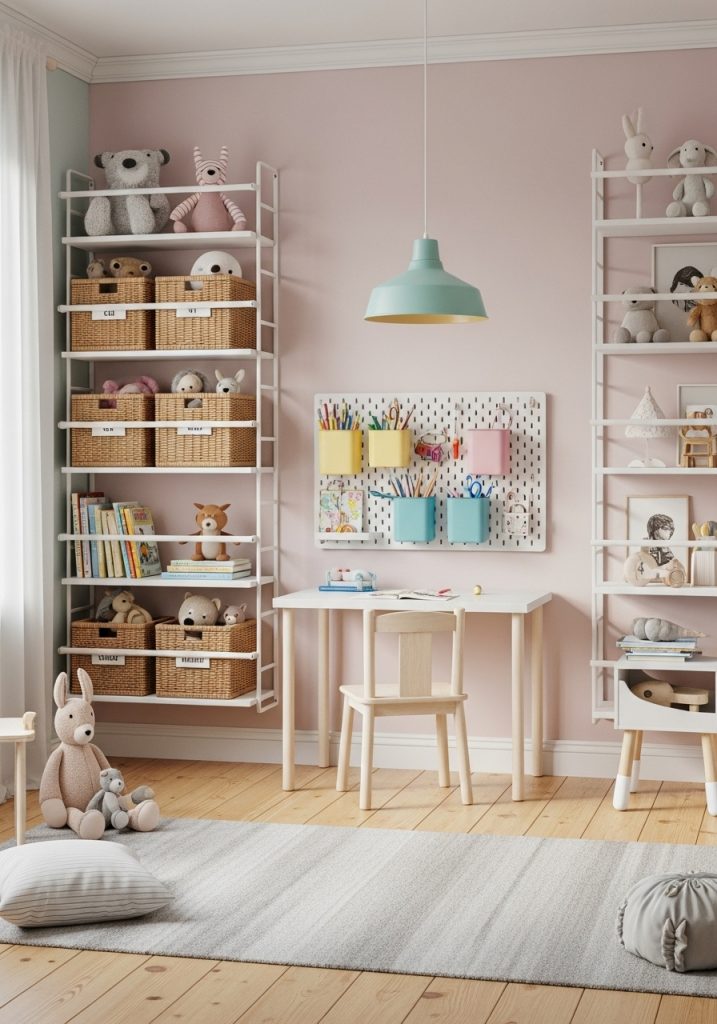
2. Transparent Storage Bins with Picture Labels
Clear plastic bins are a parent’s best friend when it comes to toy storage. They allow kids to see exactly what’s inside without opening every container. Stackable and space-saving, transparent bins work well in closets, under beds, or inside cube shelving units.
To make cleanup easier, label each bin with a picture and a word (e.g., a drawing of a dinosaur with the word “Dinosaurs”). This visual labeling system is perfect for pre-readers and encourages children to return items to their proper place. Group similar toys together—blocks, animals, action figures—and make it part of the daily routine.
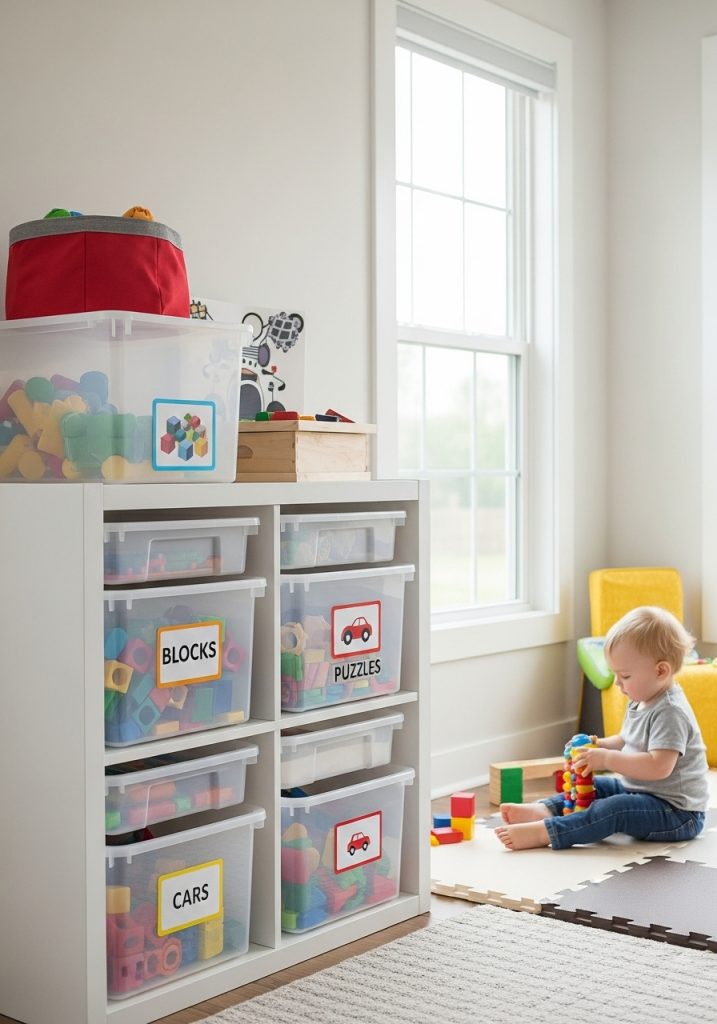
3. Under-Bed Storage for Hidden Organization
If your child’s room is small, the space under their bed can become an essential storage zone. Use low-profile rolling bins or drawers to store seasonal clothes, extra bedding, or large toy sets that don’t need daily access.
Opt for labeled containers that your child can slide out easily. For toddlers, choose soft baskets with handles. Older children can handle under-bed drawers or rolling crates. Make sure to declutter this area regularly to avoid it becoming a dumping ground.
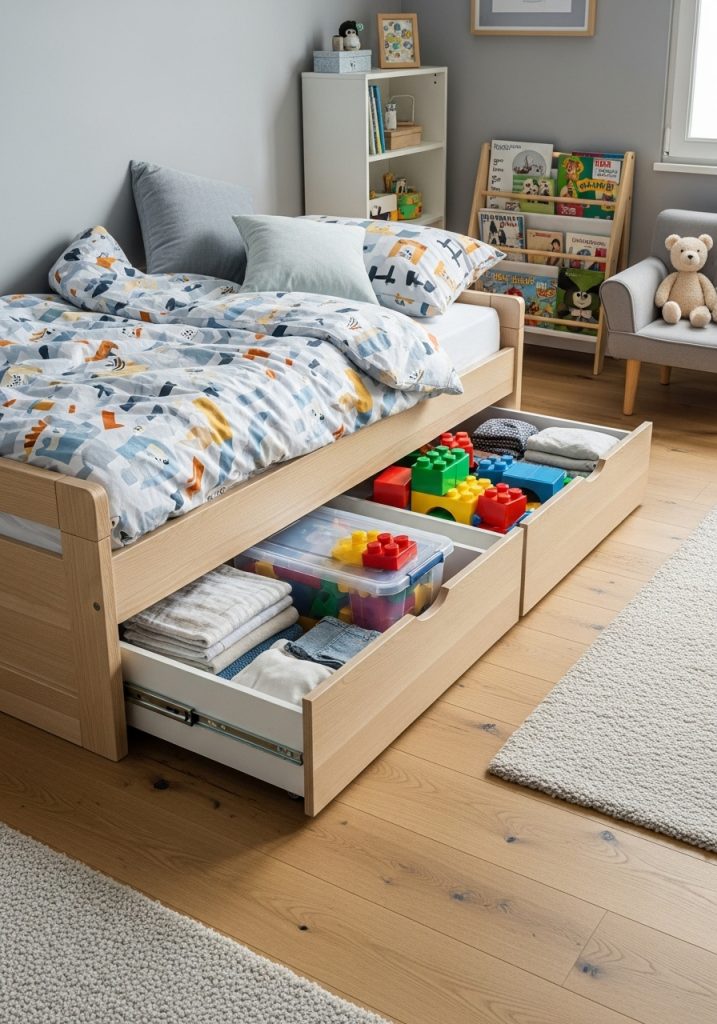
4. Toy Rotation System to Prevent Overwhelm
Too many toys can lead to sensory overload. Kids often play better and longer when there are fewer toys available at once. A toy rotation system involves dividing toys into 3 to 5 groups and only keeping one set in the room at a time.
Store the rest in labeled bins in a closet or storage area. Every week or two, swap out the set. This keeps playtime fresh and exciting and helps keep the room tidy without constant supervision.
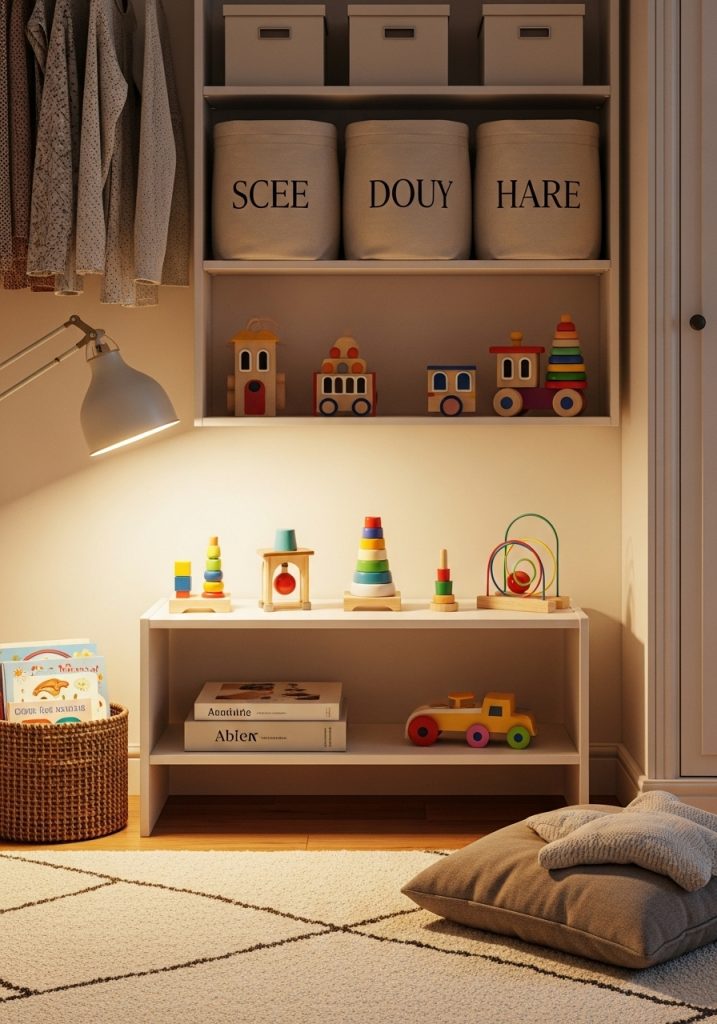
5. Over-the-Door Organizers for Small Items
The back of a bedroom or closet door can serve as hidden storage space, especially in small rooms. Use hanging organizers—often designed for shoes—to store small items like hair accessories, action figures, socks, or art supplies.
You can assign each pocket a category and label it for easy access. This not only frees up dresser and shelf space but also keeps tiny objects out of sight while still accessible to little hands.
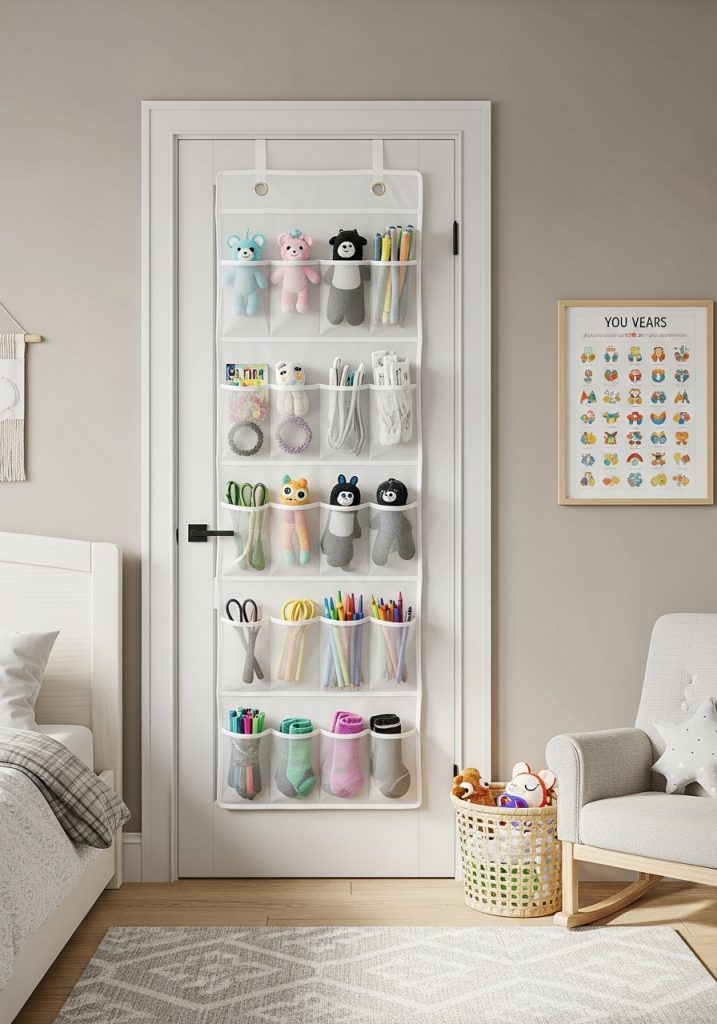
6. Defined Zones for Play, Sleep, and Learning
Creating activity-specific zones helps structure your child’s space and makes organization intuitive. Set up a quiet corner for reading with a small bookshelf and a beanbag chair. Use a small desk and rolling cart to define a homework or art station. Keep a soft rug in the center of the room for active play.
Each zone should have its own storage so that items used in one area stay in that space. This zoning method helps children understand the purpose of each area and builds habits of cleaning up.
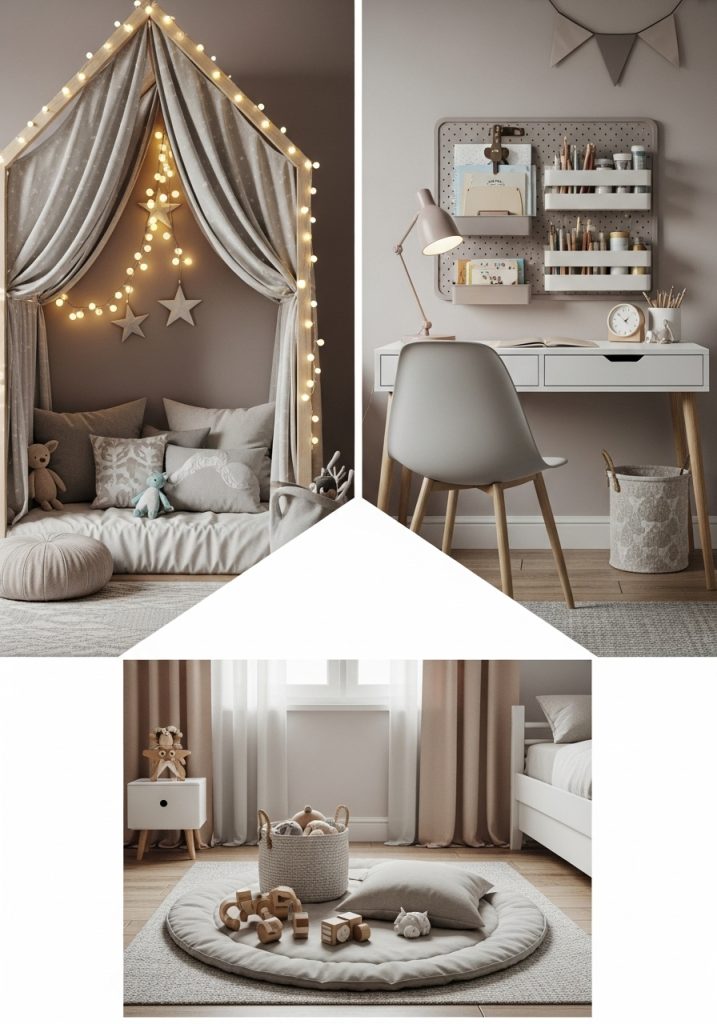
7. Multi-Functional Furniture to Save Space
In a child’s room, every piece of furniture should work overtime. Choose beds with built-in drawers, storage benches with flip tops, or desks with hidden compartments. Not only do these pieces reduce clutter, but they also streamline the space and minimize the need for excess furniture.
If you’re furnishing a small room, consider a loft bed that opens up space beneath for a study area, toy storage, or reading corner.
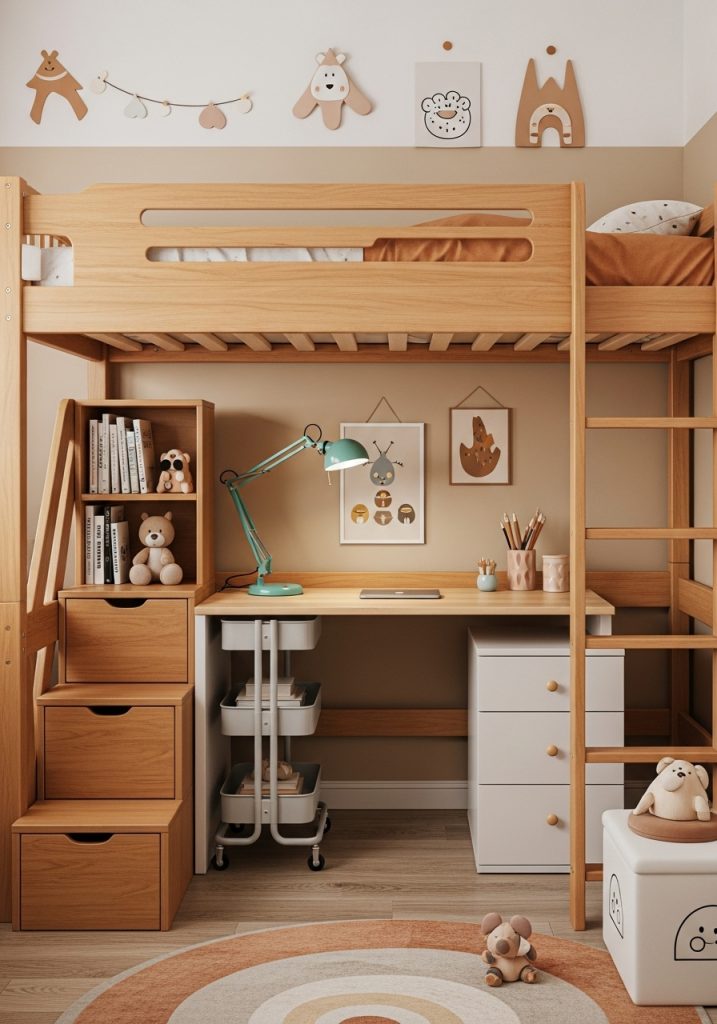
8. Personalized Hampers for Laundry Training
Laundry can be a teaching opportunity. Give each child their own laundry hamper—preferably one that’s lightweight, labeled, or even themed with their favorite animal or color. You can further divide laundry into darks, lights, and towels using color-coded bins.
Encouraging children to use their own hamper builds routine and responsibility while keeping the room neat.
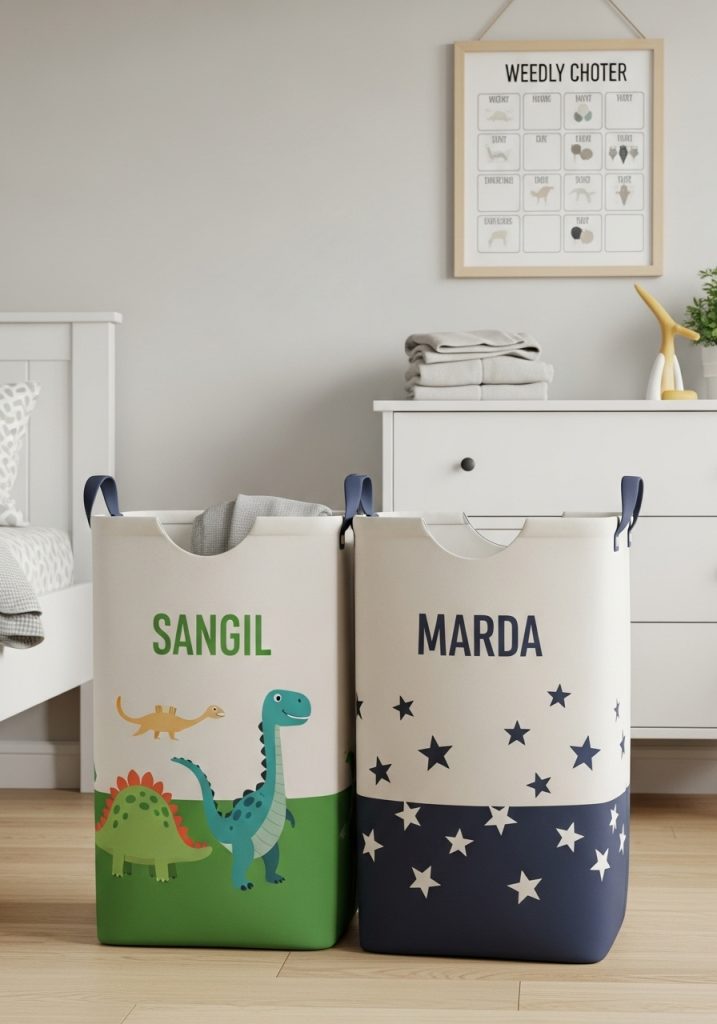
9. Art Display and Storage Station
Kids are prolific creators, but without a system, artwork piles up quickly. Dedicate one wall or bulletin board to display current masterpieces. Rotate new pieces in regularly and store older artwork in labeled portfolios or flat bins under the bed.
You can also create a digital archive by photographing each art piece and keeping a digital scrapbook.
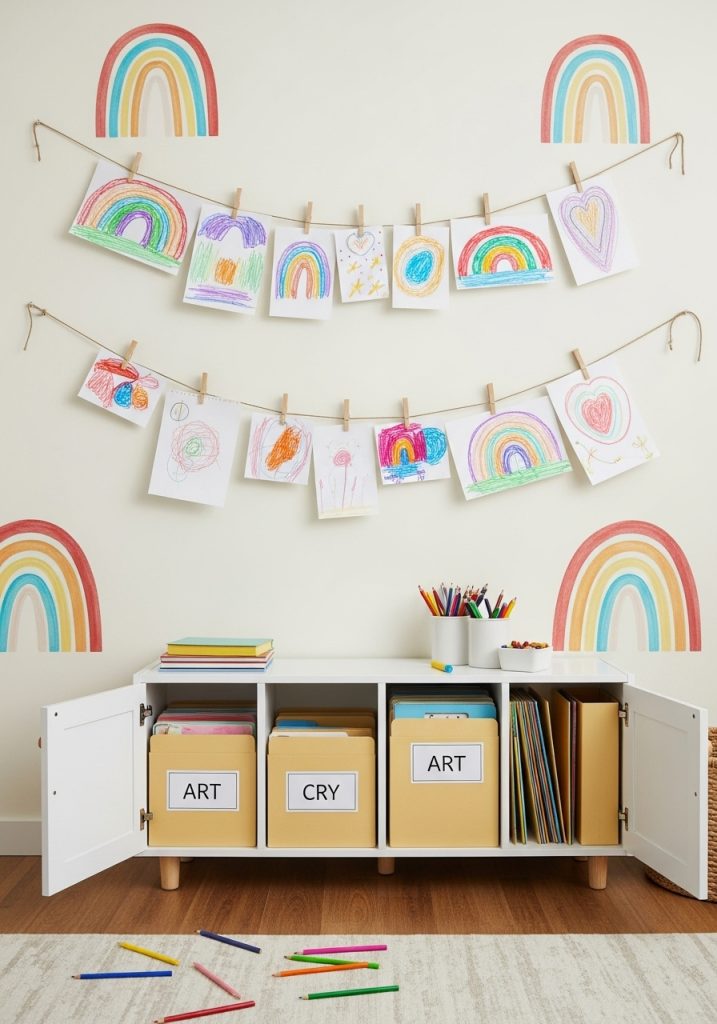
10. Weekly Organization Routine with a Visual Chart
One of the best ways to keep a kid’s room organized is by establishing a consistent weekly routine. Use a visual chart with icons representing tasks like making the bed, putting away toys, sorting laundry, and wiping the desk.
Post the chart at child height, and include a checklist or reward system to encourage completion. Over time, these actions become habits, and maintaining a tidy room becomes second nature.
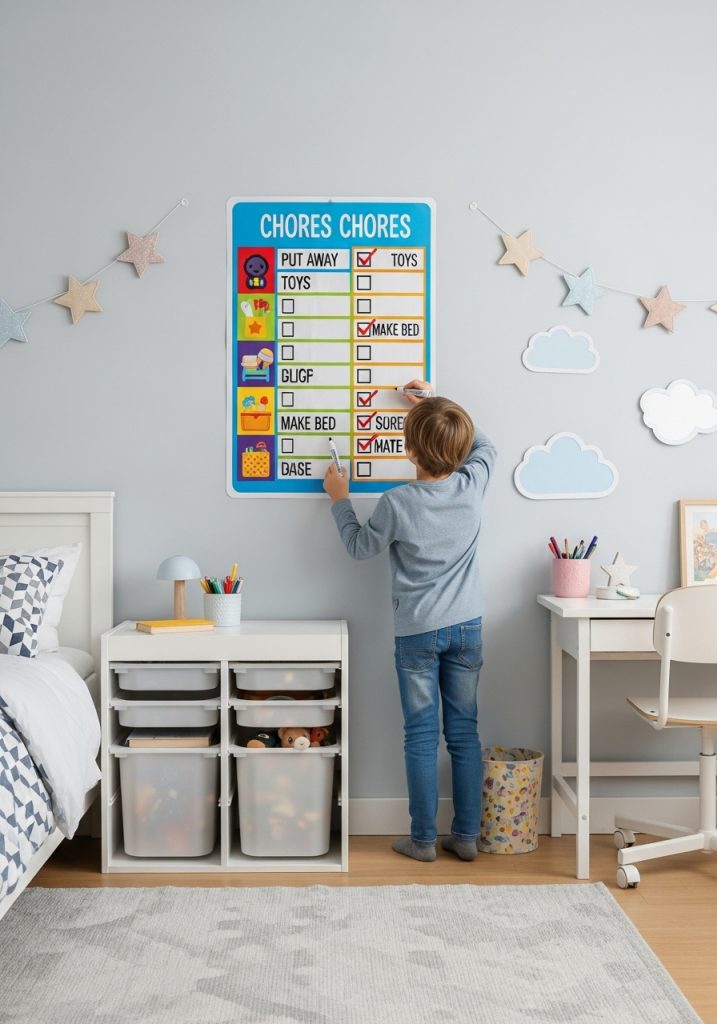
Final Thoughts
The secret to a well-organized kids room isn’t perfection—it’s consistency, creativity, and systems your child can actually follow. These organization hacks combine visual appeal with functionality, empowering kids to take part in maintaining their own space.
Whether you’re dealing with a tiny nursery, a preschooler’s toy explosion, or a shared room for siblings, implementing just a few of these ideas can make a big difference. Try one strategy at a time, and don’t forget to celebrate progress—because a tidy room is more than just clean; it’s a space where your child can grow, learn, and thrive.







